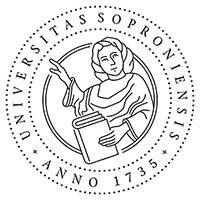Forming a Geographical Spatial Approach - Geography Taught Through Tales
Abstract
Folk tales are born in certain geographical environments so they have the characteristics of people, the features of landscapes and economical circumstances. Every tale originates from the special mentality, intellectuality and culture of a nation therefore the nation’s economic and social systems, geographical location and cultural development are reflected in the patterns of folk tales. Geography taught through tales can be a novel science in the complex system of geographical sciences, within as a principally human geographical element can enrich the treasury of cultural geography. It can be the link between geography and human sciences. Teaching geography through tales provides further opportunities with the worldview-forming function of tales so in the competence-based education at the more receptive stages of childhood - at nursery and early school ages -with the help of stories we can bring geography closer to them. In our lives we meet geography more than we would really think so. By the time we start to learn it as a subject at school we have already had imagines of this science. In tales, literary masterpieces, documentary films we often encounter geography. Although none of them are in connection with geography they can visualize space for us. We can also state that the world of tales, literature and media are equally useful supporters of geography- we think of either a subject or a science - because they play an important role in shaping people’s imagines of the world. The natural scientific and technological key competence developed in this way can become a base for all further natural scientific studies in the lifelong learning.
Downloads
Published
Issue
Section
License
Copyright (c) 2008 Matesz Krisztina

This work is licensed under a Creative Commons Attribution-NonCommercial-NoDerivatives 4.0 International License.








